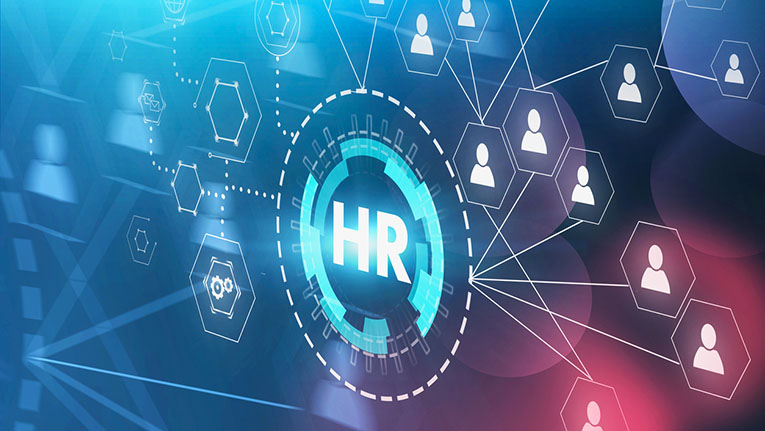In the fast-paced world of business, the Human Resources (HR) department plays a pivotal role in managing an organization’s most valuable asset: its workforce. Over the years, HR technology has evolved significantly, transforming the way HR professionals manage and engage with employees. This evolution has been marked by a shift from manual processes and spreadsheets to sophisticated Human Resource Information Systems (HRIS) that streamline HR operations.
In this article, we will delve into the remarkable journey of HR technology, examining how it has evolved from the days of laborious spreadsheets to the efficient, data-driven HRIS solutions of today.
The Use of Spreadsheet
HR departments relied heavily on manual processes and spreadsheets to manage essential HR functions. Tasks such as employee records, payroll, and attendance tracking were labor-intensive, prone to errors, and time-consuming. Using spreadsheets was the norm, and HR professionals dedicated significant hours to data entry and calculations. This manual approach was not only inefficient but also left organizations vulnerable to data inaccuracies and security concerns.
Spreadsheets did serve as an essential tool, providing a structured way to organize HR data. They allowed HR professionals to create basic reports, but the limitations were clear. Data was decentralized, making it challenging to access real-time information, and the risk of data loss or corruption was ever-present. Moreover, as organizations expanded, the spreadsheet approach became increasingly unmanageable.
The Rise of HR Software
The limitations of spreadsheets paved the way for the adoption of HR software. These early HR software solutions aimed to simplify HR processes and reduce manual work. They often included modules for tasks such as payroll, benefits administration, and time and attendance tracking.
While HR software offered an improvement over spreadsheets, it was not without its challenges. These solutions were often standalone applications that did not integrate well with other systems, making it difficult to achieve a unified view of HR data. Data entry was still required, and HR professionals faced a steep learning curve when adapting to new software.
The Emergence of Integrated HRIS
As organizations continued to grow and globalize, the need for more comprehensive HR solutions became evident. This demand led to the development of Human Resource Information Systems (HRIS). HRIS is an integrated software solution that combines various HR functions into a single platform, offering a centralized repository for all HR data.
The introduction of HRIS marked a significant turning point in HR technology. These systems offered a range of benefits, including:
Centralized Data Management
HRIS systems revolutionized HR data management by offering a centralized repository. This streamlined data retrieval minimized redundant information, and significantly improved data security, safeguarding sensitive HR information from unauthorized access or loss.
Streamlined Processes
HRIS systems streamlined HR processes by automating routine tasks such as payroll processing, benefits administration, and performance reviews. This increased efficiency and reduced the likelihood of errors.
Enhanced Reporting and Analytics
HRIS systems empowered HR professionals with robust reporting and analytics tools. This enabled the creation of insightful reports, tracking vital performance metrics. HR teams could then make informed, data-driven decisions, enhancing their ability to optimize processes and improve overall organizational performance.
Employee Self-Service
HRIS solutions introduced employee self-service portals, enabling workers to autonomously update personal data, access pay information, and request time off. This shift in administrative tasks to employees eased HR’s workload, enhancing efficiency and improving the overall employee experience while reducing the risk of errors.
Compliance and Regulations
HRIS systems incorporated compliance features, aiding organizations in adhering to labor laws and regulations. These tools helped HR teams manage documentation, track policy changes, and ensure compliance, minimizing the risk of legal complications and financial penalties while promoting a secure and compliant work environment.
Cloud-Based HRIS
The evolution of HRIS did not stop with on-premises solutions. The rise of cloud computing and Software as a Service (SaaS) platforms brought a new era of HR technology, making HRIS more accessible and flexible.
Cloud-based HRIS solutions offer several advantages:
Scalability
HRIS solutions offered scalability, enabling organizations to effortlessly adapt to workforce growth or changing requirements. This flexibility eliminated the need for substantial infrastructure investments, providing cost-efficient and seamless expansion as organizations evolved and their HR demands increased.
Accessibility
Cloud-based HRIS systems provided HR professionals with remote data access via an internet connection, facilitating remote work and global collaboration. This accessibility empowered HR teams to work from various locations, ensuring flexibility and efficient cross-border communication and cooperation.
Automatic Updates
With cloud-based HRIS, software updates and maintenance became the responsibility of the HRIS provider. This ensured that organizations consistently had access to the latest features and security enhancements without needing to invest time, effort, or resources in managing software updates themselves.
Cost Efficiency
Cloud HRIS solutions introduced a subscription-based model that significantly reduced upfront costs. This affordability allowed businesses, regardless of their size, to access advanced HR technology without the financial burden of traditional on-premises systems, making it a cost-effective solution for organizations of all scales.
Mobile HRIS Apps
The advent of mobile technology further revolutionized HRIS systems. Many HR software providers developed mobile apps that allowed HR professionals and employees to access HR information and perform tasks from their smartphones or tablets. This mobile accessibility enhanced the overall user experience and increased productivity.
Mobile HRIS apps offer features such as:
Employee Self-Service
Mobile HRIS apps granted employees the convenience of requesting leave, accessing pay records, and updating personal information via smartphones. This enhanced accessibility not only streamlined administrative tasks for employees but also improved overall satisfaction, offering greater flexibility and self-service capabilities.
Manager Access
Managers, through mobile HRIS apps, gained the ability to approve employee leave requests, assess team performance, and make informed decisions in real-time, regardless of their location. This mobile empowerment of managers increased operational efficiency and enabled more responsive leadership in organizations.
Notifications and Alerts
Mobile HRIS apps provided instant notification functionality for crucial HR events. This feature ensured that both employees and managers received real-time alerts, enabling timely responses to urgent matters, such as policy updates, performance evaluations, or other time-sensitive HR-related events, contributing to improved efficiency and communication.
Artificial Intelligence (AI) and Machine Learning (ML)
As technology continued to advance, AI and ML made their way into HRIS systems. These technologies brought significant improvements in areas such as recruitment, employee engagement, and talent management.
Recruitment
AI-powered tools revolutionized the recruitment process by automating candidate screening, identifying top candidates by analyzing resumes and job profiles, and even predicting employee turnover using data analysis. This not only saved time but also improved the quality of hires and reduced the risk of costly turnover.
Employee Engagement
AI-driven surveys and sentiment analysis transformed employee engagement strategies. These tools enabled organizations to gauge employee satisfaction by analyzing feedback, sentiments, and responses. This data empowered HR to take proactive measures to enhance workplace culture, boosting employee morale, retention, and overall productivity.
Predictive Analytics
Machine learning algorithms played a pivotal role in HR by predicting critical trends like turnover rates and skills gaps. This predictive analysis allowed HR to develop proactive strategies to mitigate these challenges, such as targeted retention efforts and customized training programs, improving workforce planning and management.
Data Security and Privacy
With the increasing digitization of HR data, data security and privacy became paramount. HRIS providers had to adapt to evolving regulations and industry standards, such as the General Data Protection Regulation (GDPR) in Europe and the California Consumer Privacy Act (CCPA) in the United States. As a result, HRIS systems incorporated robust data security features, encryption, and compliance tools to protect sensitive employee information.
The Future of HR Technology
The evolution of HR technology is far from complete. As we look ahead, several trends and developments are shaping the future of HR technology:
Employee Experience
Modern HRIS systems prioritize enhancing the employee experience by offering personalized services, seamless onboarding processes, and tools to facilitate employee growth and development. These features not only improve job satisfaction but also increase overall productivity and engagement, contributing to a positive work environment.
Diversity, Equity, and Inclusion (DEI)
HR technology is advancing to bolster Diversity, Equity, and Inclusion (DEI) initiatives. This includes implementing unbiased recruitment processes, harnessing data-driven insights to rectify disparities, and offering comprehensive training and development programs to create more inclusive and diverse workplaces, promoting social responsibility and business success.
Advanced Analytics
AI and ML will continue to play a significant role in HR technology, providing more sophisticated analytics and predictive capabilities. These tools will help HR professionals make data-driven decisions that impact the organization’s bottom line.
Remote Work Support
The shift towards remote and hybrid work models will necessitate HR technology that supports the management of remote teams, including tools for performance management, collaboration, and well-being.
Integration and Interoperability
HRIS systems will become even more integrated with other business systems, enabling seamless data flow between HR, finance, and other departments. This integration will provide a more comprehensive view of the organization.
Conclusion
The journey of HR technology, from spreadsheets to HRIS, has been a remarkable one. It has transformed HR departments from administrative back offices into strategic partners within organizations. The evolution has been driven by the need for efficiency, data-driven decision-making, and the changing dynamics of the modern workplace.
While we’ve come a long way, the future of HR technology holds exciting possibilities. As organizations continue to adapt to new challenges and opportunities, HR technology will play a crucial role in helping them succeed. It’s safe to say that the evolution of HR technology is far from over, and we can expect even more exciting developments in the years to come.

Aimee Garcia is a senior editor at ReadDive. She has 5+ years of experience in Digital Marketing. She has worked with different IT companies.





